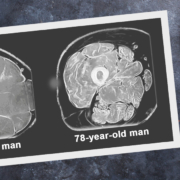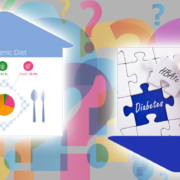Ice Cream, the Health Food
Paula gave me an article to read from The Atlantic written last summer, in which author David Merritt Johns tackled the issue of outlandish results in nutrition-science studies. In this case, the issue was research demonstrating that eating ice cream regularly reduced the risk of developing type 2 diabetes and cardiovascular disease. He interviewed the chairman of acclaimed nutrition research schools and departments. He interviewed the scientists who published the results of the studies—or not, in one case, because they wouldn’t talk about it. No one could explain it, it didn’t fit their model, so the results got buried.
I reviewed the studies in question, including the dissertation of the researchers who wouldn’t talk about the study. Any way you look at it, two servings per week of a half cup of high-fat ice cream reduced the risk of the aforementioned conditions between 12–54%. The researchers didn’t want to talk about it or acknowledge it, but the data is the data.
Five Reasons the Data Should Be Accepted
- The assumption is that the Dietary Guidelines are correct for everyone. Maybe they aren’t.
- The studies used a food frequency questionnaire. They’ve been used forever and are still no better than they were when developed, like trying to paint the Mona Lisa with a 6-inch brush. For example, how many servings of carrots did you have in July? Few people could answer with any accuracy, so why are we still depending on these tools?
- They could have assessed the data differently. Divide the subjects by caloric intake first, then by foods or macronutrients. They used the same approach as I’ve talked about before and statistically added a percentage of calories to see how it would impact the results.
- Maybe the results are just the results. It really confirmed prior studies. Why would you ignore data just because it doesn’t agree with your view of how things should be?
- Maybe it’s time to stop parsing the imparsible. When the data tell a different story, quit trying to make it fit your theory of nutrition.
Maybe what they should have done is find out what is found in full-fat ice cream but not in high-fat milk or cream, which do contribute to CVD and T2D. Maybe it’s a microbiome issue. Stop saying it’s an outlier and find out why it appears to work.
The Bottom Line
Nobody asked me, but I think it’s portion control. Two half-cup servings per week is very different from two pints a day. That may be the real reason behind the positive results. If you want to have a couple of half-cup servings of ice cream a week, I don’t think it will harm you and just may help. Just pay attention to the portion size.
What are you prepared to do today?
Dr. Chet
References:
1. http://nrs.harvard.edu/urn-3:HUL.InstRepos:37925665
2. Arch Intern Med. 2005;165:997-1003
3. JAMA. 2002;287(16):2081-2089. doi:10.1001/jama.287.16.2081
4. https://www.theatlantic.com/magazine/archive/2023/05/ice-cream-bad-for-you-health-study/673487/









